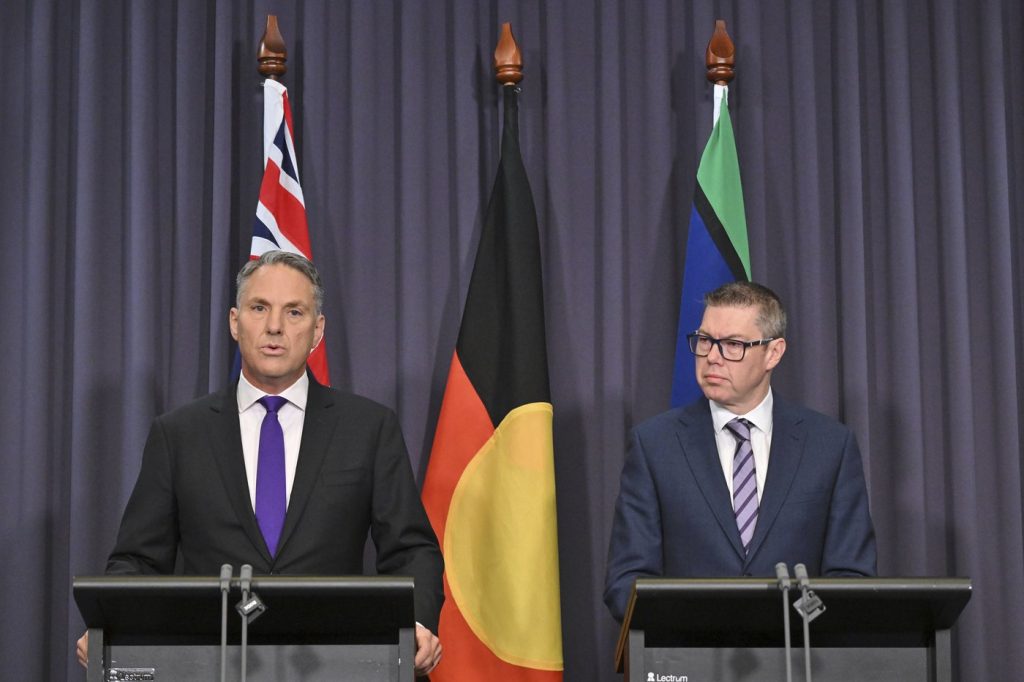WELLINGTON, New Zealand (AP) - Australia announced on Tuesday that it has accepted a bid from a Japanese company for a significant contract to build naval warships for the Australian defense forces. The contract is expected to be worth around 10 billion Australian dollars ($6.5 billion), making it a highly coveted deal in the defense industry.
Mitsubishi Heavy Industries has secured the contract to produce the Mogami-class frigate, defeating rival offers, including Germany's MEKO A-200 from Thyssenkrupp Marine Systems. The Japanese government had heavily lobbied for this opportunity, particularly after missing out on Australia's submarine contract awarded to a French company in 2016.
Defense Minister Richard Marles emphasized the significance of the agreement, stating, "This is clearly the biggest defense industry agreement that will ever have been struck between Japan and Australia. In fact, it’s really one of the biggest defense exports that Japan has ever engaged in." This new fleet will consist of 11 naval vessels intended to replace Australia’s aging fleet of ANZAC-class ships.
According to plans, three of the frigates will be constructed in Japan, with the first vessel expected to be operational in Australia by 2030. The remaining eight frigates will be built in Australia, thereby contributing to the local defense industry and job creation.
Reports from Australian news outlets indicated that Thyssenkrupp Marine Systems highlighted their bid with a lower price and greater experience in international shipbuilding. However, Australian Defense Industry Minister Pat Conroy stated that the Mogami-class frigate was a "clear winner" when evaluated on factors such as cost, capability, and the anticipated delivery schedule.
The advanced vessels will feature a range of up to 10,000 nautical miles (approximately 18,520 kilometers) and will be equipped with 32 vertical launch cells capable of firing long-range missiles. Notably, the new frigates can operate with a crew of just 90, significantly fewer than the 170 crew members required for the older ANZAC-class ships.
Mitsubishi's success represents a substantial advancement for Japan's defense industry, which has historically not engaged in building naval vessels for export. Japan, whose only formal ally is the United States, views Australia as a strategic partner and has increasingly sought to enhance bilateral military collaboration, especially amid rising tensions in the South China Sea region.
Japan’s Defense Minister, Gen Nakatani, expressed his approval of the Australian government's decision, calling it a major step toward strengthening national security cooperation between Japan and Australia. He underscored that co-developing the frigate would facilitate joint training and operational integration between the two nations.
Following the acceptance of the bid, Australian officials announced that they would begin work on a binding commercial contract with Mitsubishi Heavy Industries and the Japanese government, with a finalized agreement anticipated in 2026. While the exact cost per ship has not been disclosed, the Australian government has allocated AU$10 billion for the project over the next decade, which is part of a broader AU$55 billion budget earmarked for the navy's surface combatant fleet during the same period.
—
Associated Press writer Mari Yamaguchi contributed from Tokyo.
Charlotte Graham-mclay, The Associated Press










